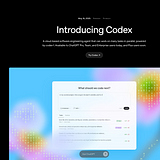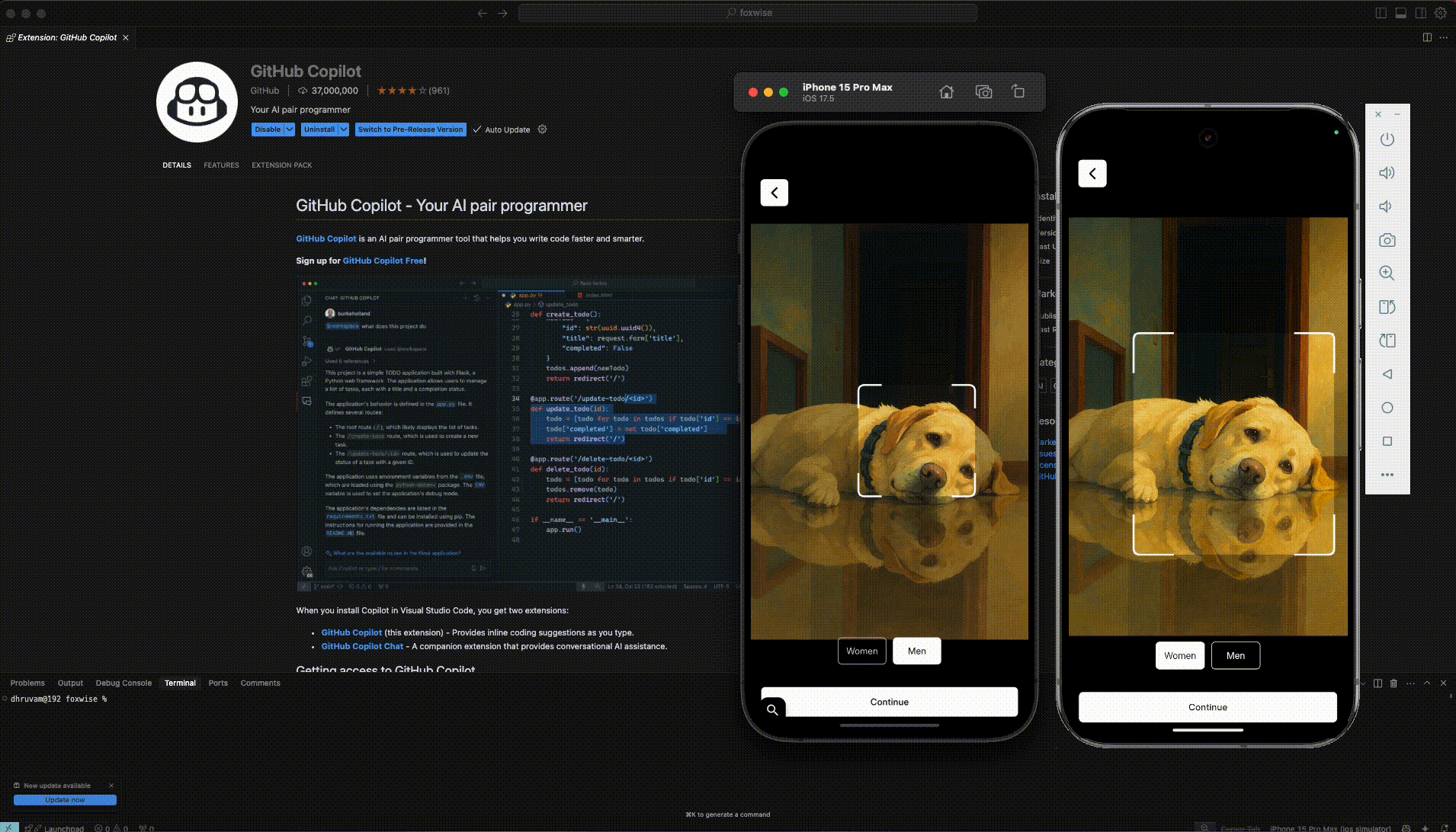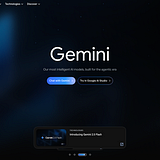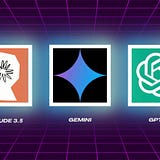Why Apple, Atlassian, AWS developers use Zed: next-generation Agentic Editor — 2025
Zed isn’t a random startup. It was founded by Nathan Sobo, the creator of Atom and Tree-sitter, which powers syntax parsing in most editors

The race to build the ultimate AI-powered coding environment has never been fiercer in the rapidly evolving world of developer tools. Amidst Cursor, Windsurf, and legacy VS Code forks, Zed has quietly — and now loudly — emerged as a favourite among elite developers from companies like Apple, Atlassian, and AWS.
But why are some of the world’s top engineering minds choosing Zed over the rest? This article explores how Zed’s philosophy, performance, and AI-native design make it the editor of choice for 2025.
Update 2025:
Right now, Zed only has a stable release for macOS and Linux. Windows users can build from source, but the reason we don’t have a stable release for Windows is that it’s not finished yet.
Another update 2025:
OpenAI has acquired Windsurf. According to multiple reports from May 6, 2025, OpenAI reached an agreement to acquire the AI-assisted coding tool Windsurf (formerly known as Codeium) for approximately $3 billion.
Speed: Built for Real-Time, Not Retrofits
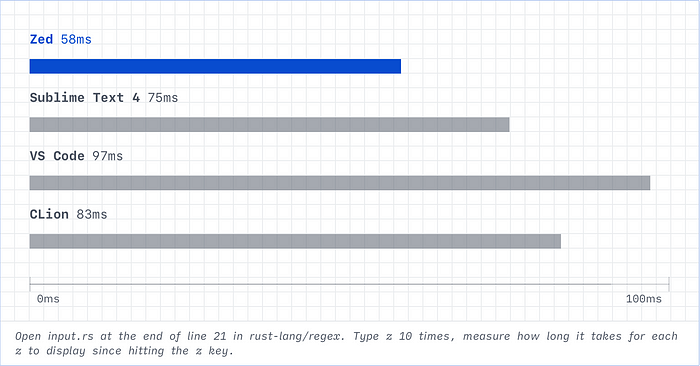
Unlike Cursor or Windsurf — both based on Electron-powered VS Code forks — Zed is built from the ground up in Rust for one thing: speed.
- Startup time? Nearly instant.
- Typing latency? Measured in microseconds.
- Multiplayer? Seamless. Think Google Docs for code — but without lag.
This isn’t just performance for the sake of benchmarks. Developers at scale — especially in fast-paced environments like AWS or Apple — rely on real-time responsiveness when navigating massive codebases, pair programming, or live debugging. Zed delivers that natively.
AI as a Core Principle, Not a Plug-In
Most AI editors started as IDEs and added AI later. Zed did the opposite. It was designed with AI at its core — tightly integrating code completion, intent understanding, and chat-based navigation into the editor’s fabric.
Here’s what sets it apart:
- Command Chat: Rather than hopping between a terminal and an editor, Zed’s AI interprets commands like “refactor to hooks,” “create a unit test,” or “make this work with Next.js” — contextually.
- Inline Reasoning: You can highlight a confusing block and ask Zed to explain it in plain English, or rewrite it more cleanly.
- Context Awareness: It remembers your workspace layout, open files, and even the purpose of your current task, like an AI pair programmer that’s actually in sync with you.
- The recent introduction of the Edit Prediction feature, powered by Zed’s open-source language model Zeta, anticipates developers’ next moves, streamlining the coding process . Additionally, Zed now supports Gemini 2.5 Pro, enhancing its AI capabilities further .
Designed for Deep Work, Not Just Code
Zed understands something other editors miss: flow state is sacred.
That’s why everything about its design — from the distraction-free interface to opinionated multi-pane navigation — is built to help developers think clearly and code uninterrupted.
- No clutter.
- No redundant chrome.
- No clunky modals.
Just an editor that gets out of your way — unless you ask it for help.
Multiplayer Coding, Finally Done Right
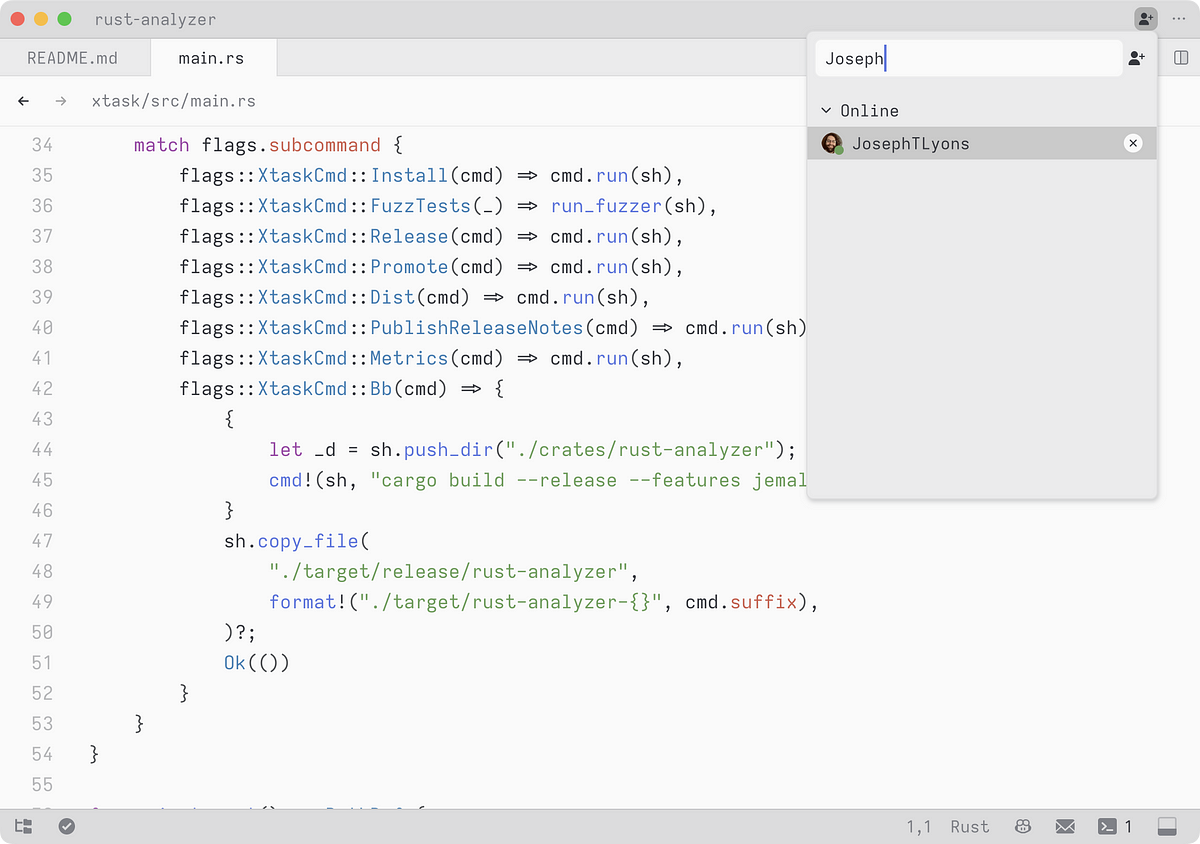
Zed’s real-time collaboration isn’t an afterthought. It’s baked into the DNA.
- Invite anyone instantly to your project, with roles like observer, co-pilot, or editor.
- Live cursors, shared terminals, synchronised AI chat — everything synced flawlessly.
- Used by distributed teams at Atlassian and AWS to debug production issues or ship features together.
This kind of synchronous dev experience was a pipe dream in VS Code. In Zed, it’s standard.
Built by the Original GitHub Atom & Tree-sitter Team
Zed isn’t a random startup. It was founded by Nathan Sobo, the creator of Atom and Tree-sitter, which powers syntax parsing in most modern editors.
This pedigree shows:
- Syntax highlighting is buttery smooth.
- Incremental parsing keeps the editor smart and lightweight.
- Language support feels first-class, even without extensions.
When seasoned devs from Apple or AWS see Zed in action, they recognise the craftsmanship instantly.
With the release of version 0.177, Zed introduced native Git support, allowing developers to manage version control directly within the editor. Features like staging, committing, and reviewing diffs are integrated seamlessly, enhancing the development workflow.
Privacy & Local AI Models
Zed also respects developer autonomy:
- On-device AI support is coming, allowing inference without cloud dependencies.
- Encrypted collaboration sessions mean you don’t have to trust third-party servers with your code.
- No telemetry-based overreach — just enough analytics to improve the product, nothing more.
That’s a huge win for enterprise teams handling sensitive or proprietary systems.
So, Why Are Top Developers Moving to Zed?
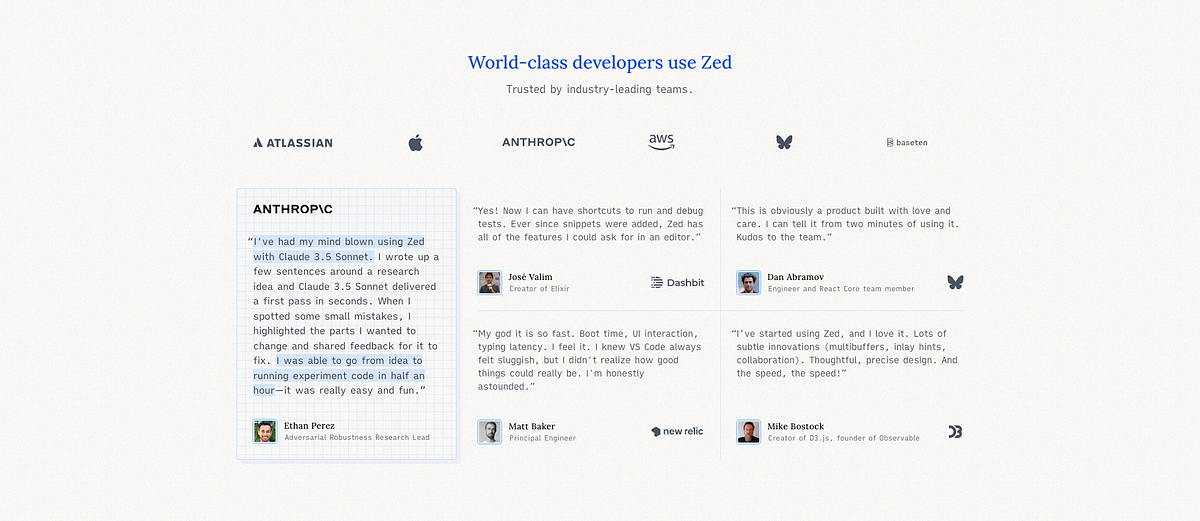
- Apple developers love Zed’s speed, clean UI, and local-first philosophy.
- Atlassian engineers rely on multiplayer and AI flows for seamless async + sync collaboration.
- AWS devs appreciate the performance on massive projects and the extensibility without bloat.
Models and Pricing


Final Thoughts: A New Standard for 2025
Zed isn’t just another AI tool bolted onto an ageing codebase. It’s a reimagination of what a code editor can be in the era of AI, multiplayer, and deep focus.
If you’re serious about development in 2025, it might be time to try other options.
Read more by Dhruvam:
